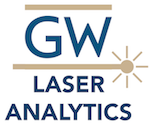D. Michelle Bailey and J. Houston Miller
Geophysical Research Abstracts Vol. 20, EGU2018-821, 2018
Beyond anthropogenic carbon emissions, the increase in atmospheric carbon from natural feedbacks such as thawing permafrost poses a risk to the global climate as global temperatures continue to increase. Permafrost is formally defined as soil that is continuously frozen for 24 consecutive months. These soils comprise nearly twenty-five percent of the Earth’s terrestrial surface and possess twice the amount of carbon currently in the atmosphere. Continuous collection of carbon dioxide (CO2) and methane (CH4) concentrations is imperative in understanding seasonal and inter-annual variability of carbon feedbacks above thawing permafrost. A multi-year collaborative effort with the University of Alaska – Fairbanks, NASA Goddard Space Flight Center, and our group at George Washington University was undertaken to monitor these feedbacks near Fairbanks, Alaska.
In June 2017, we deployed two open-path tunable diode laser sensors at the Bonanza Long Term Ecological Research Site for measurement of CO2 and CH4 concentrations. The open-path instrument (OPI) is an inexpensive, low-power sensor that collects spatially-integrated measurements of target molecules approximately 1.5 meters above ground level. With a total power burden of 18 W, the sensors ran exclusively on solar power for 15 days in a young thermokarst bog and 3.5 days at a rich fen site. Here we report on initial retrieval of diurnal cycles from each field site and compare our spatially-integrated measurements of CO2 and CH4. For CO2, the magnitude of the diurnal cycles show a strong dependence on daily weather at both field sites. These laser measurements are complemented by point measurements of CO2, temperature, pressure, and humidity made along the laser’s optical path by non-dispersive infrared (NDIR) sensors. Instrument up-time during field campaigns was limited by ground-surface instability resulting in misalignment and loss of laser-return signal. To mitigate against this performance degradation, we also present an auto-alignment scheme for the OPI. By implementing a simplex optimization approach via a custom Python script, the instrument can adjust the alt-azi position of the laser launch box in order to maximize return signal without human intervention. We have demonstrated this alignment protocol over short and long pathlengths and found that the utility of autoalignment is limited by the pointing accuracy of our motorized mount.
The instrumentation and its development play a key role in the advance in research, which makes it possible to offer to the researchers state-of-the-art tools to address scientific "open questions" and to open new fields of research leading to new discoveries.
Since the last decade, atmospheric environmental monitoring has benefited from the development of novel spectroscopic measurement techniques owing to the significant breakthroughs in photonic technology from the UV to the THz domain, which allows opening up new research avenues for observation of spatial and long-term trends in key atmospheric precursors, improving our understanding of tropospheric chemical processes and trends that affect regional air quality and global climate change. Extensive development of spectroscopic instruments for sensing the atmosphere continues to be carried out to improve their performance and functionality, and to reduce their size and cost.
This proposed focus session entitled "Advanced Spectroscopic Measurement Techniques for Atmospheric Science" addresses the latest developments and advances in a broad range of photonic instrumentation, optoelectronic devices and technologies, and also their integration for a variety of atmospheric applications. The objective is to provide an opportunity to get a broad overview of the current state-of-the-art and future prospects in photonic instrumental development for atmospheric sensing. It provides an interdisciplinary forum to enhance interactions between experimentalists, atmospheric scientists, development engineers, as well as R&D and analytical equipment companies to define the needs of the atmospheric scientists to address current atmospheric science issues, and coordinate these needs with the current capabilities of spectroscopic measurement techniques.
Topics for presentation and discussion will include but not be limited to: cavity-enhanced spectroscopy including IBBCEAS, ICOS, CRDS, UAV- or balloon-based measurement techniques, heterodyne radiometry, and aerosol spectroscopy ....; and their applications to in situ photonic metrology (concentration, vertical concentration profile, isotopes, flux, ...) of atmospheric aerosol, radicals & trace gases (HOx, RO2, NO3, HONO, NOx, greenhouse gases, halogens, CH2O, VOCs, BVOCs, light hydrocarbons, ....) in field observation, geological exploration, prospecting and survey, intensive campaigns and smog chamber study.
